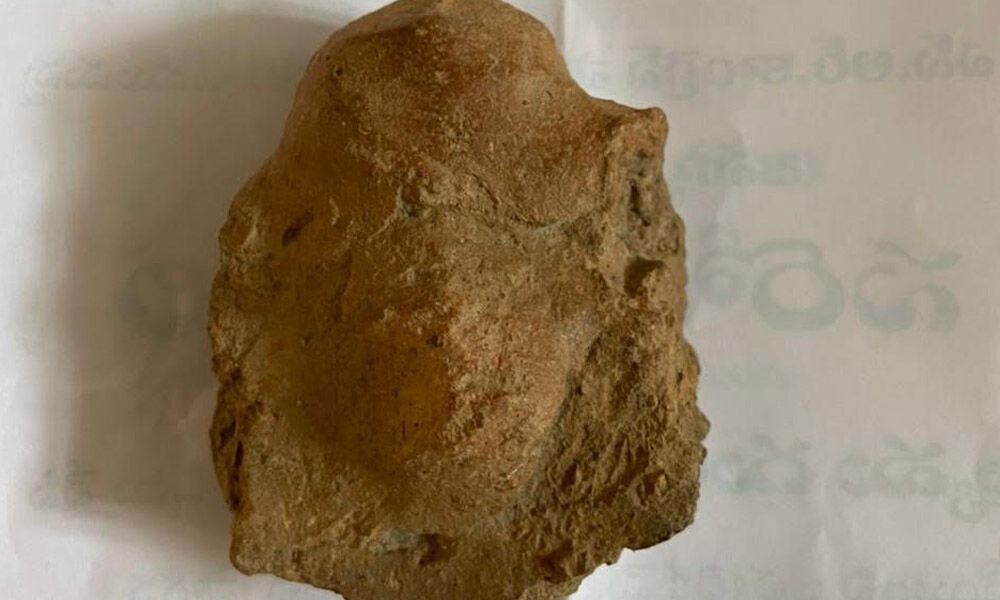Live
- Pant shatters Iyer's IPL auction record, sold to Super Giants for Rs 27 cr
- Yuva Sangeetha Sammelanam held
- Dharani proves a bane for 25K families across State
- Reckless, Dangerous Arms Race
- Russia needs a peace deal as it is running out of soldiers
- MyVoice: Views of our readers 25th November 2024
- Lack of planning, weak narrative behind MVA debacle
- UTF dist unit golden jubilee celebrations begin
- TSIC launches ‘Innovations 101’ coffee table book
- Drone technology for crime control
Just In
Anantapur: 2nd century terracotta Ganesha sculpture found


2nd century terracotta Ganesha sculpture found
- The head of the sculpture, found at Madakasira in Anantapur district, is elephantine without any headgear with two hands.
- Based on the iconography, style of art and delineation, Sivanagi Reddy of Cultural Centre of Vijayawada and Amaravati, says it is from Satavahana times
Anantapur: Dr E Sivanagi Reddy, Archaeologist, and CEO of the Cultural Centre of Vijayawada and Amaravati discovered a tiny 2nd century terracota Ganesha sculpture of Satavahana times at Nilakanthapuram village in Madakasira mandal of Anantapur district on Thursday.
While he was conducting exploration in and around Nilakanthapuram as part of data collection to compile the history of the village, it was found in the agricultural fields of former minister N Raghuveera Reddy near Pothugundu Dinne.
After the examination of the Ganesha, it was found that the image was created by a potter well-versed with the iconography and it was seen seated in Lalitasana (flexible posture).
According to him, the head of the sculpture was elephantine without any headgear with two hands. The proboscis was clearly seen turned towards the right side another unique feature such as an early date. These features facilitated him to identify it as Ganesha's sculpture. The ears, hands, and legs were broken due to the constant tilling of land.
Based on the iconography, style of art, and delineation, Sivanagi Reddy dated it to the 2nd century AD. He further added that this became one of the earliest Ganesha images in South India, as similar terracotta Ganesha datable to the same period from Veerapuram in Kurnool district were reported by the Birla Archaeological and Cultural Research Institute in the early 1980s.
Dr. R H Kulkarni, art historian, College of Fine Arts in Karnataka Chitrakala Parishad in Bengaluru, has also confirmed that it is an image of Ganesha, created during the time when the Brahmanical images were taking the perfect forms. He cited a reference in Gathasaptasati compiled by Hala, the Satavahana emperor.
Dr Reddy also found polished redware. Red slipped ware and black and red ware of the Satavahana times as associate finds to the terracotta Ganesha image. Sivanagi Reddy concluded that it was made by hands using levigated clay and baked or burnt well in a separate kiln under the supervision of a potter who is an expert in hand-made sculpture. With the discovery of the image and pottery, he said that Nilakanthapuram now gained a spot on the Satavahana map.

© 2024 Hyderabad Media House Limited/The Hans India. All rights reserved. Powered by hocalwire.com






